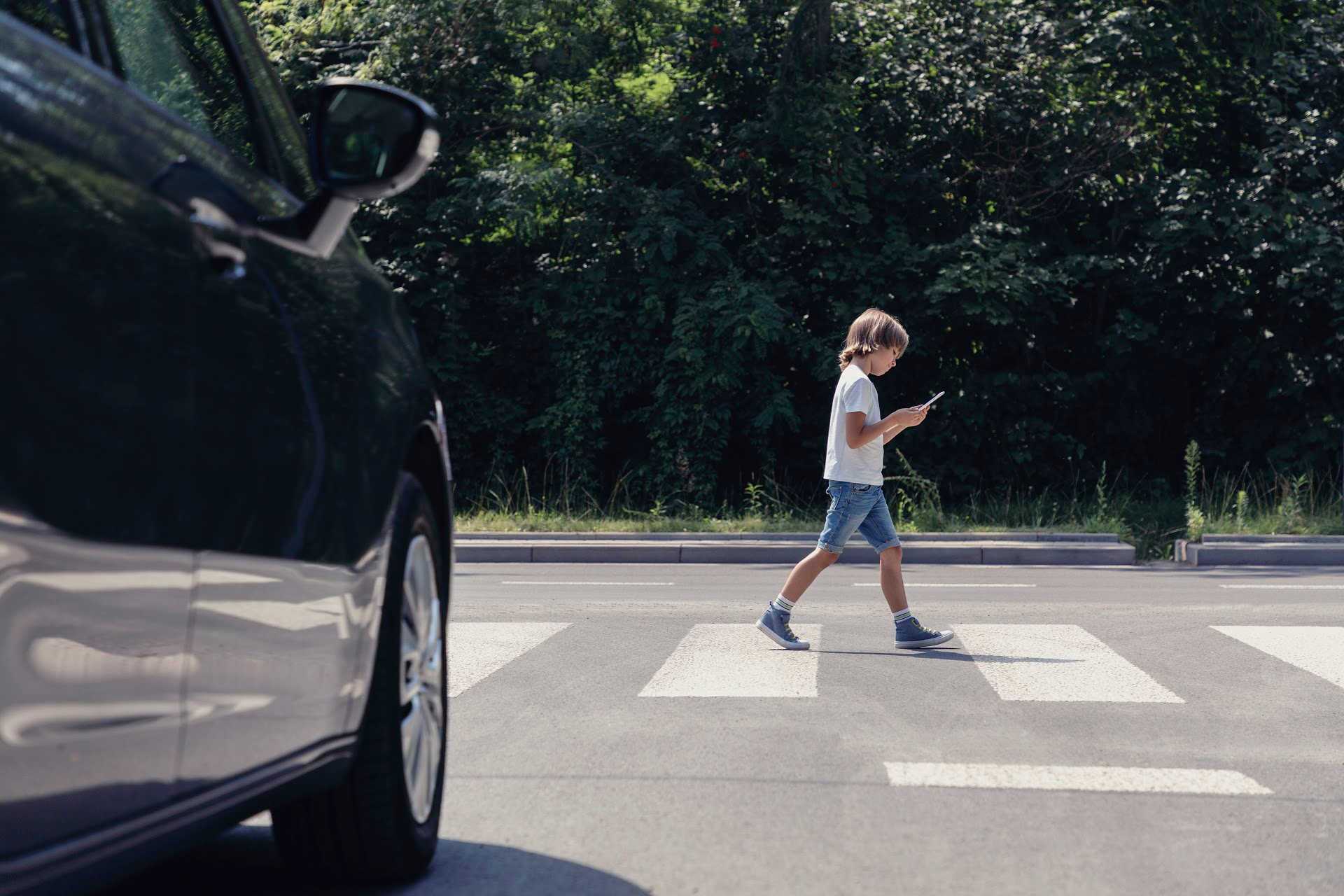Walking along our roadways can be a dangerous activity at every age, especially when considering that the number of vehicles on the road and the distance we travel continues to increase, but new studies show it can be especially dangerous for teenagers. Certain factors, including teens’ inclination to take more risk and their use of mobile devices, put them at a higher risk of being struck by a car and injured while using our roads on foot. For example, texting and walking are shown to be high-risk activity leading to teen pedestrian injuries.
Across all age groups, pedestrian traffic deaths are at the highest level in the US in more than three decades. Looking at children specifically, 20% of children within the 14 and under age group and 10% of children within the 15-19 age group who are killed in a motor vehicle crash are pedestrians. Every hour, about two children age 19 and under are injured or killed after being struck by a vehicle while walking, according to Safe Kids Worldwide.
In recent years, teens have emerged as the age group with a greater risk of injury as pedestrians because of a mix of unsafe crossing behavior and increasing distraction from using mobile devices. It is estimated that children between the ages of 12 and 14 are at a 74% higher risk of a nonfatal injury as a pedestrian. Safe Kids Worldwide surveyed teens and found that 90% had a cell phone, 54% said they crossed the street wearing headphones and 33% said they have crossed the street while texting.
Improve Teen Pedestrian Safety with These Seven Tips
Of course, walking is a great way to get exercise and enjoy the outdoors. Independent teenagers also have to walk to get to and from school, work, and other extracurricular events. Walking also helps our children develop a sense of independence and responsibility. To keep giving our children and teens such freedoms, we must work together to improve safety for everyone using our roads, both drivers and pedestrians.
As adults, we can start by being role models for our children and demonstrate how to use roads safely. Review these safe practices for modeling our behavior, while also teaching children and reminding teens how to stay safe when walking:

- Always cross at a designated crosswalk or corner and pay close attention to traffic signals and signs. Injuries happen most often mid-block or in places other than intersections.
- Remember to look left, right, and left again before crossing the street. Then keep scanning as you cross the street.
- Ensure drivers see you crossing the street by making eye contact before crossing in front of them.
- Choose sidewalks or paths when available. If there is no sidewalk, walk facing traffic and as far to the left as possible.
- Remember “Heads Up, Phones Down” when crossing the street. When your eyes are on your phone, they are not watching the road.
- Do not use headphones when crossing the street. Or, at least remove one earbud. Hearing a car approaching can help you react sooner.
- Wear reflective clothing when walking after dark. Purchase backpacks and accessories with reflective to help improve visibility.
What to do After an Accident as a Pedestrian
Our roads are busy, drivers are distracted, and unfortunately, accidents still happen too frequently. It is also crucial for children and teens to know what to do if ever involved in an accident as a pedestrian:
- Move to a safe place away from traffic, if possible.
- Call 911 immediately and ask for medical help for any injuries, or ask an adult on the scene for help calling 911.
Once the child is safe, parents should consider taking these additional steps:
- Request a police report.
- Contact an attorney for help understanding how to file the proper paperwork and ensure all responsible parties are notified.
- Submit the claim for the incident with your insurance company and include the police report.
Getting in touch with a personal injury attorney can help a victim or the parent of a victim understand if filing a case is the best option. Our team at Panter, Panter & Sampedro has the experience and knowledge to handle cases involving vehicle and pedestrian accidents and we are here to help with your questions. Contact our office if you or a loved one were a victim of an accident involving a negligent driver at (305) 662-6178.
Sources:
SafeKids.org (September 2020). Child Pedestrian Safety in the U.S. Trends and Implications for Prevention. Retrieved from: https://safekids.org/research-report/child-pedestrian-safety-us-trends-and-implications-prevention
National Highway Traffic Safety Administration. National Statistics. Retrieved from: https://cdan.nhtsa.gov/tsftables/National Statistics.pdf


